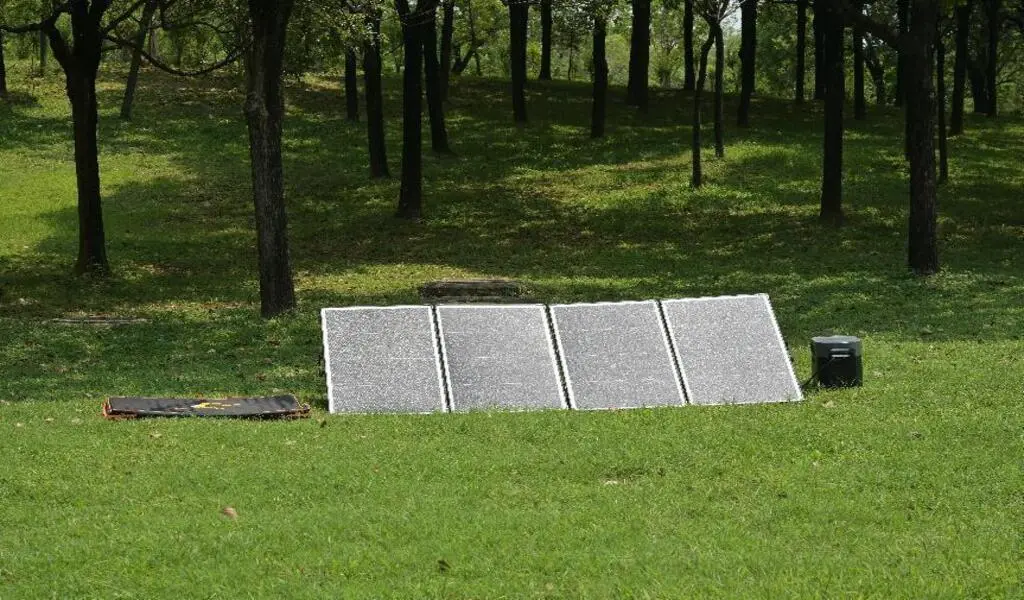Learning
Sustainable Camping: Respecting Nature and Leaving No Trace

In today’s world, more and more people seek to escape the hustle and bustle of the city, immerse themselves in nature, and enjoy the pleasures of outdoor camping. However, to ensure that our descendants can also enjoy the beauty of nature, we need to carefully consider how to engage in sustainable camping, minimizing our negative impact on the environment.
This article will provide a detailed guide on how to engage in low-impact sustainable camping, respecting nature and leaving no trace.
What is Eco-friendly Camping?
Eco-friendly camping, also known as sustainable camping or green camping, all share the same foundation: enjoying outdoor activities in a way that minimizes the negative impact on the environment.
It’s not just about our current camping experience; it’s about what we leave behind for future generations. Sustainable camping is an expression of responsibility, a demonstration of respect and protection for nature.
What Does “Leave No Trace” Mean?
If we were to describe eco-friendly camping with one concept, it would be “leave no trace.” Leaving no trace means that when we depart, the only mark we leave behind is our footprints, not litter, a disrupted ecosystem, or pollution. Leaving no trace is a core principle of sustainable camping, and in the following sections, we will explain how to practice it.
Choosing an Eco-friendly Camping Site
Selecting a suitable camping site is the first step in sustainable camping. Different areas have different ecosystems, and some are more fragile and require greater protection. When choosing a camping site, consider the following recommendations:
Familiarize yourself with local regulations and restrictions to ensure that your camping activities are legal and do not violate local laws. Camping illegally can result in fines and potential environmental damage.
Choose recognized camping sites, as they typically provide facilities and regulations to ensure environmental protection. These sites have been approved to accommodate campers’ needs while minimizing disruption to the ecosystem.
Avoid wilderness camping unless you possess the necessary backcountry survival skills and permits. Wilderness camping may put more significant stress on the environment, as these locations often lack trash receptacles, sanitation facilities, and other amenities.
Respect secluded spots; do not expose them to the public to avoid overexposing the ecosystem to visitor pressure. Sharing these secret locations may lead to overdevelopment, causing irreversible damage to the local ecosystem.
Traveling to Sustainable Camping Sites
Even after choosing an appropriate camping location, it’s crucial to consider how you travel there to minimize your carbon footprint. Here are some eco-friendly travel suggestions:
Use public transportation, such as trains, buses, or ride-sharing services, to reduce personal vehicle use. This not only reduces road congestion but also lowers emissions, contributing to improved air quality.
If driving to the camping site is necessary, carpool whenever possible to reduce the number of vehicles while ensuring your vehicle is in good working condition. Carpooling not only reduces your carbon footprint but also saves on fuel costs.
Consider using greener vehicles, such as hybrid cars or electric vehicles. These vehicles typically have higher fuel efficiency and reduce reliance on fossil fuels.
Minimize air travel, as flying typically produces higher carbon emissions. If possible, choose camping locations closer to home to reduce travel distance and time.
Establishing an Eco-friendly Camping Site
Once you’ve reached the camping location, it’s essential to ensure that setting up your campsite doesn’t cause irreversible harm to the environment. Here are some tips for establishing an eco-friendly campsite:
Adhere to wilderness ethics; do not pick or damage local vegetation, leaving the environment in its natural state. Harvesting plants can disrupt the local ecosystem and harm wildlife.
Use designated camping facilities, such as established campgrounds or campsite pads, to reduce ground impact. These facilities have been approved and take measures to minimize soil and vegetation damage.
Follow safety principles when setting up a campsite, ensuring that tents or shelters are positioned away from cliff edges or riverbanks to prevent accidents. Choosing safe locations can reduce the risk of unforeseen events while protecting the natural environment.
Abide by local regulations and avoid camping in prohibited areas. These rules are in place to maintain the ecological balance of specific areas and protect unique ecosystems.
Creating Sustainable Campfires
Campfires are an integral part of the camping experience, but how you create them can have a significant impact on the environment. Here are some recommendations for building sustainable campfires:
Use designated fire pits or fire rings instead of lighting fires haphazardly in the wild to reduce the risk of uncontrolled flames. Designated fire pits are typically placed in safe locations to prevent the spread of fires.
Use eco-friendly fuels like ethanol or liquefied petroleum gas (LPG) instead of wood to reduce deforestation and air pollution. Traditional wood-burning fires may deplete forest resources.
Using green solar power while camping reduces damage to the natural environment. You can also use electrical stoves to cook outdoors without the air pollution from open flames and burning oil, making it safer and more environmentally friendly. Generally speaking, 400w solar panel is enough to support one day’s electricity demand.
Avoid burning plastics, metals, or other harmful substances to prevent toxic emissions into the air. These harmful materials can have adverse effects on health and contribute to air and water pollution.
Ensure the campfire is thoroughly extinguished before leaving the campsite, leaving no smoldering embers. Incomplete extinguishing of fires can lead to wildfires and forest destruction.
Managing Garbage in Eco-friendly Camping
Proper waste management is a crucial part of sustainable camping. Garbage not only tarnishes the beauty of the natural surroundings but also poses potential threats to wildlife. Here are some methods for handling garbage while on a camping trip:
Pack out all your garbage, including food scraps, packaging materials, tissues, and other personal waste. Leave no waste behind at the campsite, even if it appears biodegradable.
Use reusable food containers and water bottles to reduce single-use plastic consumption. Disposable plastic products can be carried away by the wind and contribute to environmental pollution.
Sort your garbage and dispose of it properly, separating recyclables from hazardous waste to ensure they are correctly processed. Recycling reduces resource waste and helps reduce landfill usage.
Consider participating in local cleanup activities to contribute to the preservation of the natural environment. Many organizations regularly organize volunteer events to help clean up camping areas and other outdoor spaces.
Staying Clean and Green
During your camping journey, maintaining cleanliness and adopting green practices are essential to avoid putting additional pressure on the environment. Here are some suggestions for staying clean and green:
Use biodegradable soaps and detergents to reduce water pollution. Many traditional soaps and detergents contain chemicals that may harm aquatic life.
Use organic or environmentally certified personal care products to minimize the impact of chemicals on the environment. Traditional personal care products may contain harmful ingredients for water bodies and soil.
Conserve water, especially when camping in arid regions. Make judicious use of water sources, reducing the amount of water used for washing, rinsing, and hot water to alleviate stress on limited water resources.
Respect wildlife by keeping a distance and avoiding disruption to their habitats. Observing wildlife is a delightful experience, but excessive proximity or interference can have adverse effects on them.
Greener Camping Equipment
Selecting eco-friendly camping equipment is also a part of sustainable camping. Here are some recommendations to ensure that your gear choices are as environmentally friendly as possible:
Choose equipment made from sustainable materials, such as recycled materials or organic cotton. Many manufacturers have adopted eco-friendly production methods, using sustainable raw materials.
Consider multifunctional gear to reduce the number of items required. Multi-purpose equipment can reduce resource consumption and waste generation.
Choose durable equipment to reduce the frequency of replacements and decrease resource consumption. Investing in high-quality gear, even if it comes at a higher initial cost, can extend its lifespan.
Purchase second-hand equipment to extend the life of gear while reducing the demand for new products. Buying second-hand gear is not only cost-effective but also helps reduce resource waste.
Eco-friendly Camping Tips After the Trip
Your responsibility doesn’t end when your camping trip concludes. The key to continuing sustainable camping is taking the following actions after your camping adventure:
Thoroughly clean your campsite, ensuring no lingering garbage or equipment is left behind. Inspect your surroundings, including distant areas, to make sure no trash is overlooked.
Recycle or properly dispose of garbage, avoiding leaving it at the camping site. Locate the nearest garbage collection point or landfill facility and follow local regulations for disposal.
Share your experiences and knowledge, encouraging others to adopt sustainable camping practices. Through education and inspiration, we can collectively promote the principles of sustainable camping.
Support environmental organizations and advocate for sustainable camping initiatives, contributing in a small way to environmental preservation. Participate in or donate to organizations helping further the agenda of sustainable camping.
In conclusion, sustainable camping is not just a style of camping; it is a way of life that respects nature and leaves no trace to ensure the sustainability of the natural environment.
By choosing the right camping locations, adopting eco-friendly travel, establishing eco-friendly campsites, using sustainable campfires, managing garbage, and employing environmentally friendly gear, we can enjoy outdoor activities while taking responsibility for the planet.
By adopting these principles, we can ensure that future generations can continue creating lasting memories in the beautiful outdoors. Whether you’re a novice or an experienced camper, we can all work together to contribute to the practice of sustainable camping. Only through collective effort can we ensure the preservation of the beauty of nature for future generations to appreciate and explore.
SEE ALSO: 8 Reasons Why SEO is Essential for Thailand’s Tourism Industry




























